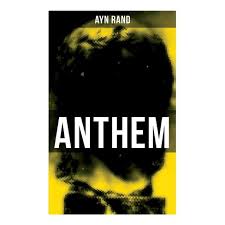PART 10
byPart 10 introduces a dramatic shift in the narrator’s journey, beginning with the discovery of a long-abandoned house nestled in an untouched valley beyond the mountains. Unlike the rigid, identical dwellings of the collective city, this structure is full of individuality—its design unique, its rooms personal, and its contents unfamiliar. A sense of awe arises from the sight of colorful clothes, mirrors, and furniture built for comfort rather than efficiency. Each object offers a silent testimony to a life once lived with personal agency. The narrator and the Golden One, upon exploring its contents, begin to grasp that people before them may have lived not in enforced unity, but in freedom. The contrast between the sterile sameness of their old world and the vivid diversity of this house creates a tangible sense of possibility.
The decision to remain in the house is not made lightly, but once made, it feels both natural and irreversible. The two beds in the house suggest intimacy and privacy, things they’ve never known under the collective regime. Instead of being disturbed by the isolation, they are filled with a sense of peace and ownership. Even the silence within the house speaks volumes; it is not oppressive but comforting. Books scattered across the rooms hint at lost knowledge, and although the words are difficult to decipher, they represent a key to understanding not just history, but identity. The reflective glass, which offers them a clear view of their own faces, holds a symbolic power—it gives them back their individuality, something long denied. With each object they find, their understanding of self becomes clearer, and the divide between past and present begins to shrink.
As the narrator contemplates the vast new world stretching beyond the house, a quiet determination builds. There’s no desire to return to the City, nor to bring anything from it into this place. This world is unspoiled, untouched by rules meant to erase thought, expression, and desire. They now possess a space to think freely, to build without restriction, and to question without fear of punishment. What lies ahead is not just survival, but a life designed by choice. The simplicity of this realization is profound: they will live by their own rules, and in doing so, they reclaim power that had once been stripped away.
The house is not just a shelter—it becomes a symbol of rebirth. The narrator begins to associate it with learning, independence, and emotional connection. It is here that they plan to study the books, uncover the meaning of forgotten words, and teach themselves what was once forbidden. The Golden One, by staying alongside him, affirms their shared purpose and commitment to this new life. No longer bound by rules or overseers, their relationship deepens, rooted not in obligation but mutual respect. They begin to understand that relationships, like knowledge, must be freely chosen to hold true value. In creating a new home, they also begin crafting a new way of living, one anchored in respect for self and for each other.
Their experience is a quiet but radical act of revolution. By accepting this house and refusing to return, they reject the totalitarian rule that sought to erase their minds and spirits. Their rebellion is not violent, yet it is total—it starts with thought, then grows into action, and now becomes foundation. Each book they open, each item they use, strengthens the bridge between a forgotten past and a reimagined future. And within that future is the possibility for others, too, to break free. They dream of a world where the mind is not chained, and where the word “I” is not cursed, but celebrated.
This chapter marks the beginning of that dream, where exile transforms into freedom, and solitude into sovereignty. Here, the narrator finds not only refuge, but a path forward. The past, once hidden and feared, becomes a resource for growth. Every piece of furniture, each forgotten artifact, becomes a spark. And with every spark, a new fire begins to burn—not of destruction, but of awakening. What begins as shelter evolves into a sanctuary of thought, proving that sometimes, freedom starts with a door left open and the courage to walk through it.

